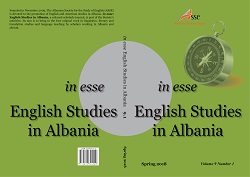The safe landscape of childhood and identity in Mark Haddon’s The Curious Incident of the Dog in the Night-Time
The safe landscape of childhood and identity in Mark Haddon’s The Curious Incident of the Dog in the Night-Time
Author(s): Pavlína FLAJŠAROVÁSubject(s): Language and Literature Studies, Studies of Literature, Sociology of Culture, Theory of Literature
Published by: Albanian Society for the Study of English
Keywords: Mark Haddon; ‘The Curious Incident of the Dog in the Night-Time’; childhood; autism; postwar British fiction; Asperger syndrome; centre; periphery
Summary/Abstract: The new millennium has witnessed a fundamental change in the perception of modernism. In his 2003 novel The Curious Incident of the Dog in the Night-Time, Mark Haddon looks at the contemporary values of Britishness through the prism of an autistic child, Christopher Boone, who creates his own landscape of the world. He is not understood by society because, as Haddon claims, Christopher “has a serious difficulty with life in that he really doesn’t empathize with other human beings. […] He can’t put himself in their shoes” (Luden 2014). The paper discusses Christopher’s “otherness” that estranges him from his contemporaries. The awareness of mental disorders on the part of the public and its effect upon the mind of the teenage boy in his fictional world is dealt with because Christopher’s autism becomes the driving force for the postmodern form of a disrupted text that is not coherent and cohesive, while using elements of detective stories. This form of the novel makes it an example of a postmodern text that on the general level explores the construction, perception, and understanding of a childhood landscape through the rites of passage of an autistic narrator.
Journal: in esse: English Studies in Albania
- Issue Year: 9/2018
- Issue No: 1
- Page Range: 43-54
- Page Count: 12
- Language: English

